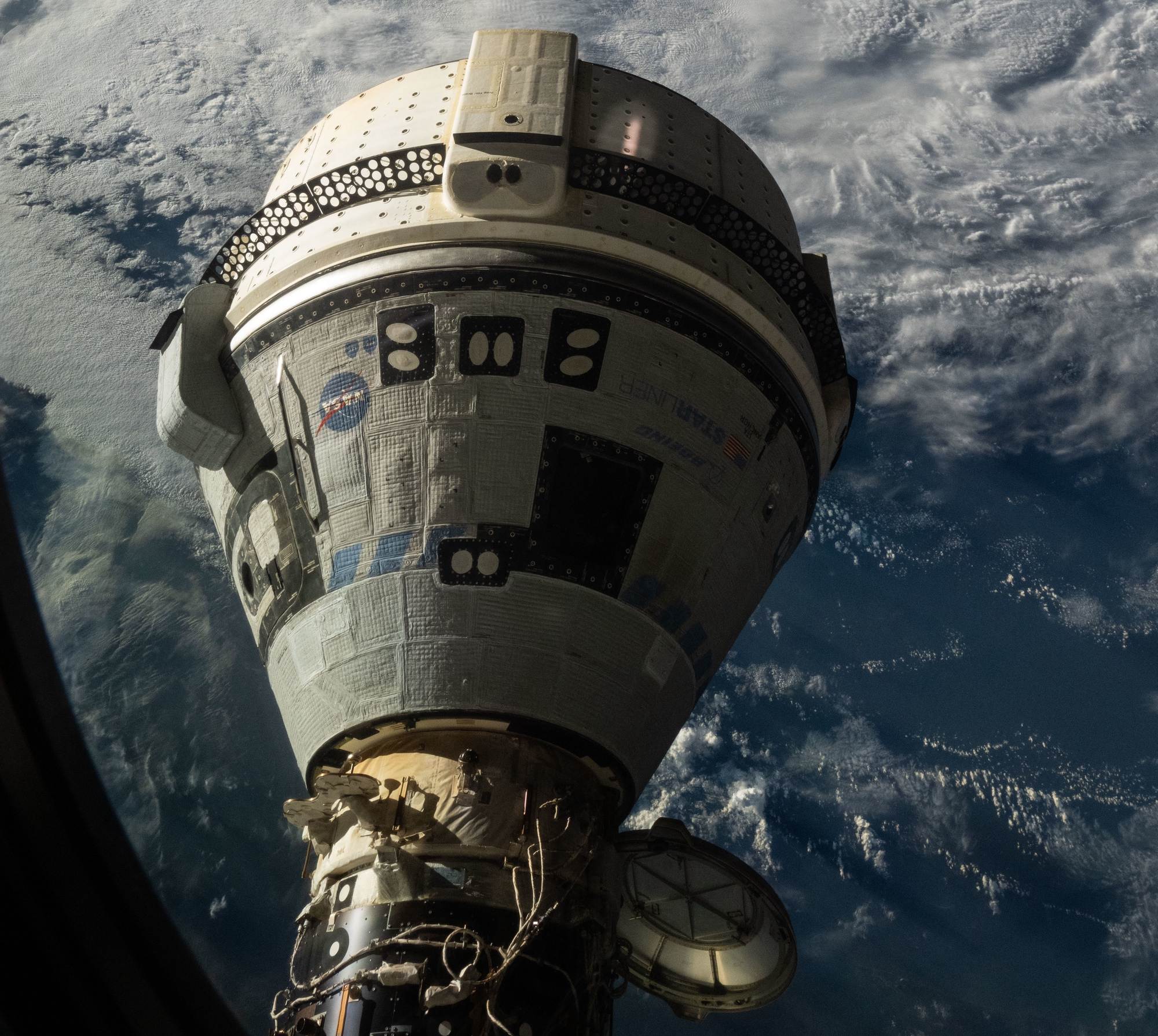NASA prepares for Starliner return from ISS
NASA Space Technology
WASHINGTON — NASA is preparing for the uncrewed return to Earth of Boeing’s CST-100 Starliner spacecraft as the agency begins work on changes to the spacecraft to correct problems found during its test flight.
Agency officials confirmed at a Sept. 4 briefing plans for Starliner to undock from the station Sept. 6 at 6:04 p.m. Eastern. The spacecraft will quickly depart the vicinity of the ISS and perform a deorbit burn at 11:17 p.m. Eastern, setting up a landing of the Starliner crew capsule at White Sands Space Harbor, New Mexico, at 12:03 a.m. Eastern Sept. 7.
Steve Stich, NASA commercial crew program manager, said there were no technical issues being worked ahead of Starliner’s uncrewed departure to complete the Crew Flight Test (CFT) mission. Weather at White Sands was also forecast to be favorable, with a slight chance of rain the only concern. A backup landing opportunity is available Sept. 10.
Starliner’s departure from the station will be different from what was originally planned when it would have astronauts on board. The spacecraft will make a relatively rapid departure from the vicinity of the station, called a “breakout burn,” rather than a more gradual separation that would include a flyaround of the station.
The breakout burn allows for a faster departure from the station, said Anthony Vareha, the lead NASA space station flight director for the undocking, as well as accommodates the lack of crew on board. “Without the crew on board, able to take manual control if needed, there’s just a lot less variables that we need to account for when we do the breakout burn, and allows us to get the vehicle on a trajectory home that much sooner.”
Stich added that this trajectory puts “less stress” on reaction control system (RCS) thrusters, whose problems on approach to the station in June ultimately led to NASA’s decision to have the spacecraft return without a crew on board. “There’s a lot fewer thruster firings,” he said.
Once Starliner is away from the vicinity of the station, though, controllers to plan to test-fire several of the thrusters. Stich said engineers are still choosing what thrusters to test, but that they may involve some of the aft thrusters that experienced problems, including one that appeared to lose all thrust on approach to the station and did not recover in subsequent tests.
Those tests will be short pulses, lasting about 0.1 seconds, which will be enough to see how well they are performing. “The purpose of that is to continue to learn,” he said, collecting data in addition to tests performed while Starliner was docked to the station. “We really want to see how the thrusters perform and what the thrust levels exactly are after we undock and fire them for a little bit.”
The RCS thrusters will be used again to maintain attitude control during the deorbit burn, which is carried out by larger thrusters. The RCS thrusters will maneuver the spacecraft after that burn to separate the crew capsule from the service module and orient the capsule for reentry.
Assuming Starliner does safely return to Earth, NASA will turn its attention to changes to the spacecraft to address the thruster problems as well as helium leaks so that the vehicle can be certified for crew rotation missions.
“We’ve been entirely focused this summer on understanding what is happening on orbit, trying to decide if we could bring the crew back or not,” Stich said. “What we need to do now is really lay out the overall plan, which we have not had time to do.”
For the helium leaks, he said the leading explanation is that exposure to oxidizer vapors is causing a seal to degrade. “One of the things we’re looking at is a different material on the seal and maybe a different, slightly enlarged seal.”
He suggested, though, that the thruster problems could be resolved without major hardware changes. “Clearly, the way we fire the thrusters causes the thruster to overheat,” he said, causing a component called a poppet and made of Teflon to swell, constraining the flow of propellant to the thruster. “We need to understand what kinds of pulses in particular cause that swelling, the number of pulses.”
While he said nothing was ruled out, he indicated that NASA was leaning towards operational changes rather than replacing or modifying the thrusters themselves. “We know the thrusters are working well when we don’t command them in a manner that overheats them and gets the poppet to swell,” he said, noting that most thrusters worked without issue. “We know that the thruster is a viable thruster.”
“The easiest thing to do is to figure out how do we lower the temperature the thruster is operating at and maybe not firing it in a manner that causes it having this overheating phenomenon,” he said. He added later in the briefing that it could include modifications to structures on the service module called doghouses that contain the thrusters to better dissipate heat or cool thrusters.
At the briefing, NASA did not indicate how long post-flight reviews of Starliner and corrective actions might take, or if Boeing would be required to perform another test flight before certification. As with several previous briefings, Boeing was not a participant.
NASA officials, though, rejected reports that earlier meetings about whether to allow astronauts Butch Wilmore and Suni Williams to return on the spacecraft descended into yelling.
“I would not characterize it as heated,” Stich said, but acknowledged that there was “some tension in the room” as Boeing argued that Starliner was safe enough while NASA felt models of thruster performance were too uncertain. “I wouldn’t say it was a yelling screaming kind of meeting. It was a tense technical discussion.”
Discover more from Tamfis
Subscribe to get the latest posts sent to your email.

